Assessment of Thermal and Mechanical Properties of Cement-Based Materials—Part 1: Crumb Rubber Concrete
Abstract
:1. Introduction
2. Materials and Methods
3. Results
3.1. Density
3.2. Thermal Conductivity
3.3. Compressive Strength
3.4. The Adhesion of Rubber in the Concrete Composition
4. Discussion
5. Conclusions
Author Contributions
Funding
Institutional Review Board Statement
Informed Consent Statement
Data Availability Statement
Conflicts of Interest
References
- Energy Efficiency in Buildings, European Commission—Department: Energy—In Focus, Brussels, 17 February 2020. Available online: https://commission.europa.eu/news/focus-energy-efficiency-buildings-2020-02-17_en (accessed on 23 November 2022).
- Tan, K.; Qin, Y.; Wang, J. Evaluation of the properties and carbon sequestration potential of biochar-modified pervious concrete. Constr. Build. Mater. 2022, 314, 125648. [Google Scholar] [CrossRef]
- Tan, K.; Wang, J. Substrate modified with biochar improves the hydrothermal properties of green roofs. Environ. Res. 2023, 216, 114405. [Google Scholar] [CrossRef] [PubMed]
- Assaggaf, R.; Maslehuddin, M.; Al-Osta, M.A.; Al-Dulaijan, S.U.; Ahmad, S. Properties and sustainability of treated crumb rubber concrete. J. Build. Eng. 2022, 51, 104250. [Google Scholar] [CrossRef]
- Assefa, G.; Glaumann, M.; Malmqvist, T.; Eriksson, O. Quality versus impact: Comparing the environmental efficiency of building properties using the EcoEffect tool. Build. Environ. 2010, 45, 1095–1103. [Google Scholar] [CrossRef]
- Obianyo, I.I.; Mahamat, A.A.; Stanislas, T.T.; Ihekweme, G.O.; Kelechi, S.E.; Onyelowe, K.C.; Onwualu, A.P.; Soboyejo, A.B. Production and utilization of earthbased bricks for sustainable building applications in Nigeria: Status, benefits, challenges and way forward. J. Build. Pathol. Rehabil. 2021, 6, 37. [Google Scholar] [CrossRef]
- Bolden, J.; Abu-Lebdeh, T.; Fini, E. Utilization of recycled and waste materials in various construction applications. Am. J. Environ. Sci. 2013, 9, 14–24. [Google Scholar] [CrossRef]
- Kavinkumar, V.; Elavarasan, S.; Anandaraj, S.; Dharmaraj, R. Development of subgrade layer using scrap tire and stabilised expansive soil. Mater. Today Proc. 2021, 37, 986–991. [Google Scholar] [CrossRef]
- Mohajerani, A.; Burnett, L.; Smith, J.V.; Markovski, S.; Rodwell, G.; Rahman, M.T.; Kurmus, H.; Mirzababaei, M.; Arulrajah, A.; Horpibulsuk, S.; et al. Recycling waste rubber tyres in construction materials and associated environmental considerations: A review. Resour. Conserv. Recycl. 2020, 155, 104679. [Google Scholar] [CrossRef]
- El Sheltawy, S.T.; Al-Sakkari, E.G.; Fouad, M.M.K. Waste-to-Energy Trends and Prospects: A Review. In Waste Management and Resource Efficiency; Springer: Berlin/Heidelberg, Germany, 2019; pp. 673–684. [Google Scholar]
- Kaza, S.; Yao, L.C.; Bhada-Tata, P.; Van Woerden, F. What a Waste 2.0: A Global Snapshot of Solid Waste Management to 2050; World Bank Publications: Washington, DC, USA, 2018. [Google Scholar]
- Dharmaraj, R.; Manikandan, P.; Narayanan, K.; Malathy, R.; Alagumurugan, R.; Rajalinggam, P. Study on Waste Rubber Tyre in Concrete for Eco-friendly Environment. Eng. Technol. India 2016, 1, 167–176. [Google Scholar]
- Chou, L.H.; Lu, C.-K.; Chang, J.-R.; Lee, M.T. Use of waste rubber as concrete additive. Waste Manag. Res. 2007, 25, 68–76. [Google Scholar] [CrossRef]
- Atahan, A.O.; Yücel, A.O. Crumb rubber in concrete: Static and dynamic evaluation. Constr. Build. Mater. 2012, 36, 617–622. [Google Scholar] [CrossRef]
- Wang, J.; Du, B. Experimental studies of thermal and acoustic properties of recycled aggregate crumb rubber concrete. J. Build. Eng. 2020, 32, 101836. [Google Scholar] [CrossRef]
- Mo, J.; Zeng, L.; Guo, F.; Liu, Y.; Ma, L.; Chen, B.; Liu, X. Experimental study on damping properties of rubber powder modified styrene-acrylic emulsion concrete beam. J. Build. Eng. 2020, 32, 101728. [Google Scholar] [CrossRef]
- Yi, O.; Mills, J.E.; Zhuge, Y.; Ma, X.; Gravina, R.J.; Youssf, O. Performance of crumb rubber concrete composite-deck slabs in 4-point-bending. J. Build. Eng. 2021, 40, 102695. [Google Scholar] [CrossRef]
- Ruwona, W.; Danha, G.; Muzenda, E. A review on material and energy recovery from waste tyres. Procedia Manuf. 2019, 35, 216–222. [Google Scholar] [CrossRef]
- Thomas, B.S.; Gupta, R.C.; Panicker, V.J. Recycling of waste tire rubber as aggregate in concrete: Durability-related performance. J. Clean. Prod. 2016, 112, 504–513. [Google Scholar] [CrossRef]
- Guo, Y.C.; Zhang, J.H.; Chen, G.M.; Xie, Z.H. Compressive behaviour of concrete structures incorporating recycled concrete aggregates, rubber crumb and reinforced with steel fibre, subjected to elevated temperatures. J. Clean. Prod. 2014, 72, 193–203. [Google Scholar] [CrossRef]
- Guo, Q.; Zhang, R.; Luo, Q.; Wu, H.; Sun, H.; Ye, Y. Prediction on damage evolution of recycled crumb rubber concrete using quantitative cloud imagine correlation. Constr. Build. Mater. 2019, 209, 340–353. [Google Scholar] [CrossRef]
- Karunarathna, S.; Linforth, S.; Kashani, A.; Liu, X.; Ngo, T. Effect of Recycled Rubber Aggregate Size on Fracture and Other Mechanical Properties of Structural Concrete. J. Clean. Prod. 2021, 314, 128230. [Google Scholar] [CrossRef]
- Khatib, Z.K.; Bayomy, F.M. Rubberized Portland Cement Concrete. J. Mater. Civ. Eng. 1999, 11, 206–213. [Google Scholar] [CrossRef]
- Nur, O.F.; Albarqi, K.; Melinda, A.P.; Al Jauhari, Z. The Effect of Waste Tyre Rubber on Mechanical Properties of Normal Concrete and Fly Ash Concrete. GEOMATE J. 2021, 20, 55–61. [Google Scholar]
- Hossain, F.M.Z.; Shahjalal, M.; Islam, K.; Tiznobaik, M.; Alam, M.S. Mechanical Properties of Recycled Aggregate Concrete Containing Crumb Rubber and Polypropylene Fiber. Constr. Build. Mater. 2019, 225, 983–996. [Google Scholar] [CrossRef]
- Záleská, M.; Pavlík, Z.; Cítek, D.; Jankovský, O.; Pavlíková, M. Eco-Friendly Concrete with Scrap-Tyre-Rubber-Based Aggregate– Properties and Thermal Stability. Constr. Build. Mater. 2019, 225, 709–722. [Google Scholar] [CrossRef]
- Pham, T.M.; Elchalakani, M.; Hao, H.; Lai, J.; Ameduri, S.; Tran, T.M. Durability Characteristics of Lightweight Rubberized Concrete. Constr. Build. Mater. 2019, 224, 584–599. [Google Scholar] [CrossRef]
- Topçu, I.B.; Unverdi, A. Scrap Tires/Crumb Rubber. In Waste and Supplementary Cementitious Materials in Concrete; Elsevier: Amsterdam, The Netherlands, 2018; pp. 51–77. [Google Scholar]
- Su, H.; Yang, J.; Ling, T.-C.; Ghataora, G.S.; Dirar, S. Properties of Concrete Prepared with Waste Tyre Rubber Particles of Uniform and Varying Sizes. J. Clean. Prod. 2015, 91, 288–296. [Google Scholar] [CrossRef] [Green Version]
- Bignozzi, M.C.; Sandrolini, F. Tyre rubber waste recycling in self-compacting concrete. Cem. Concr. Res. 2006, 36, 735–739. [Google Scholar] [CrossRef]
- Najim, K.B.; Hall, M.R. Mechanical and dynamic properties of self-compacting crumb rubber modified concrete. Constr. Build. Mater. 2012, 27, 521–530. [Google Scholar] [CrossRef]
- Polydorou, T.; Kyriakides, N.; Lampropoulos, A.; Neocleous, K.; Votsis, R.; Tsioulou, O.; Pilakoutas, K.; Hadjimitsis, D.G. Concrete with a High Content of End-of-Life Tire Materials for Flexural Strengthening of Reinforced Concrete Structures. Materials 2022, 15, 6150. [Google Scholar] [CrossRef]
- Ahmad, J.; Zhou, Z.; Majdi, A.; Alqurashi, M.; Deifalla, A.F. Overview of Concrete Performance Made with Waste Rubber Tires: A Step toward Sustainable Concrete. Materials 2022, 15, 5518. [Google Scholar] [CrossRef]
- Ozbay, E.; Lachemi, M.; Sevim, U.K. Compressive strength, abrasion resistance and energy absorption capacity of rubberized concretes with and without slag. Mater. Struct. 2011, 44, 1297–1307. [Google Scholar] [CrossRef]
- Marie, I. Thermal conductivity of hybrid recycled aggregate e rubberized concrete—Rubberized concrete. Constr. Build. Mater. 2017, 133, 516–524. [Google Scholar] [CrossRef]
- Zhu, H. Crumb Rubber Concrete Bridge Deck. Concr. Int. 2017, 39, 54–55. [Google Scholar]
- Zaleska, M.; Pavlıkova, M.; Citek, D.; Pavlik, Z. Mechanical and thermal properties of light-weight concrete with incorporated waste tire rubber as coarse aggregate. AIP Conf. Proc. 2019, 2170, 020026. [Google Scholar]
- Pierre, T.; Colinart, T.; Glouannec, P. Measurement of thermal properties of biosourced building materials. Int. J. Thermophys. 2014, 35, 1832–1852. [Google Scholar] [CrossRef]
- Copetti, C.M.; Borges, P.M.; Squiavon, J.Z.; da Silva, S.R.; Andrade, J.J.D.O. Evaluation of tire rubber surface pre-treatment and silica fume on physical-mechanical behavior and microstructural properties of concrete. J. Clean. Prod. 2020, 256, 120670. [Google Scholar] [CrossRef]
- Roychand, R.; Gravina, R.J.; Zhuge, Y.; Ma, X.; Youssf, O.; Mills, J.E. A comprehensive review on the mechanical properties of waste tire rubber concrete. Constr. Build. Mater. 2020, 237, 117651. [Google Scholar] [CrossRef]
- Siddique, F. Waste Materials and By-Products in Concrete; Springer Science & Business Media: Cham, Switzerland, 2018; Volume 6, pp. 157–165. [Google Scholar]
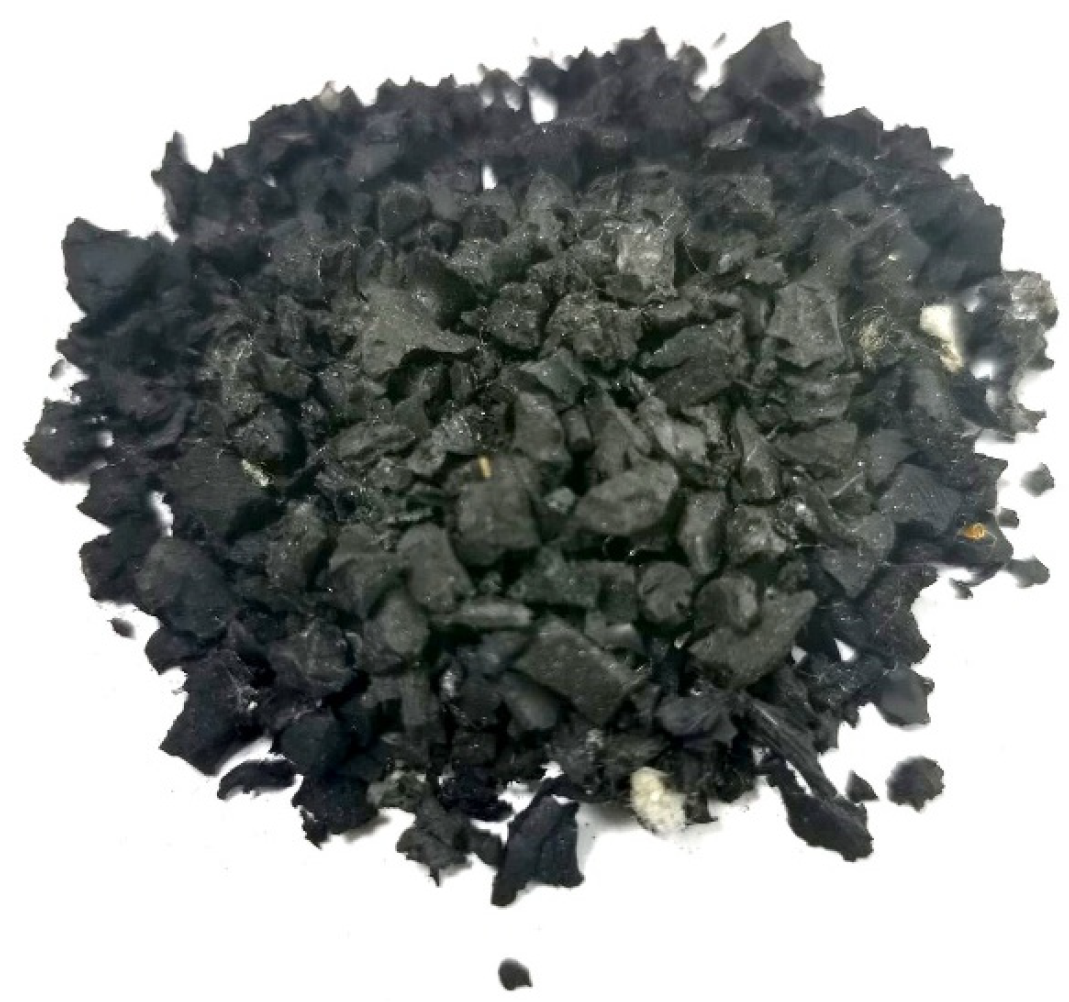
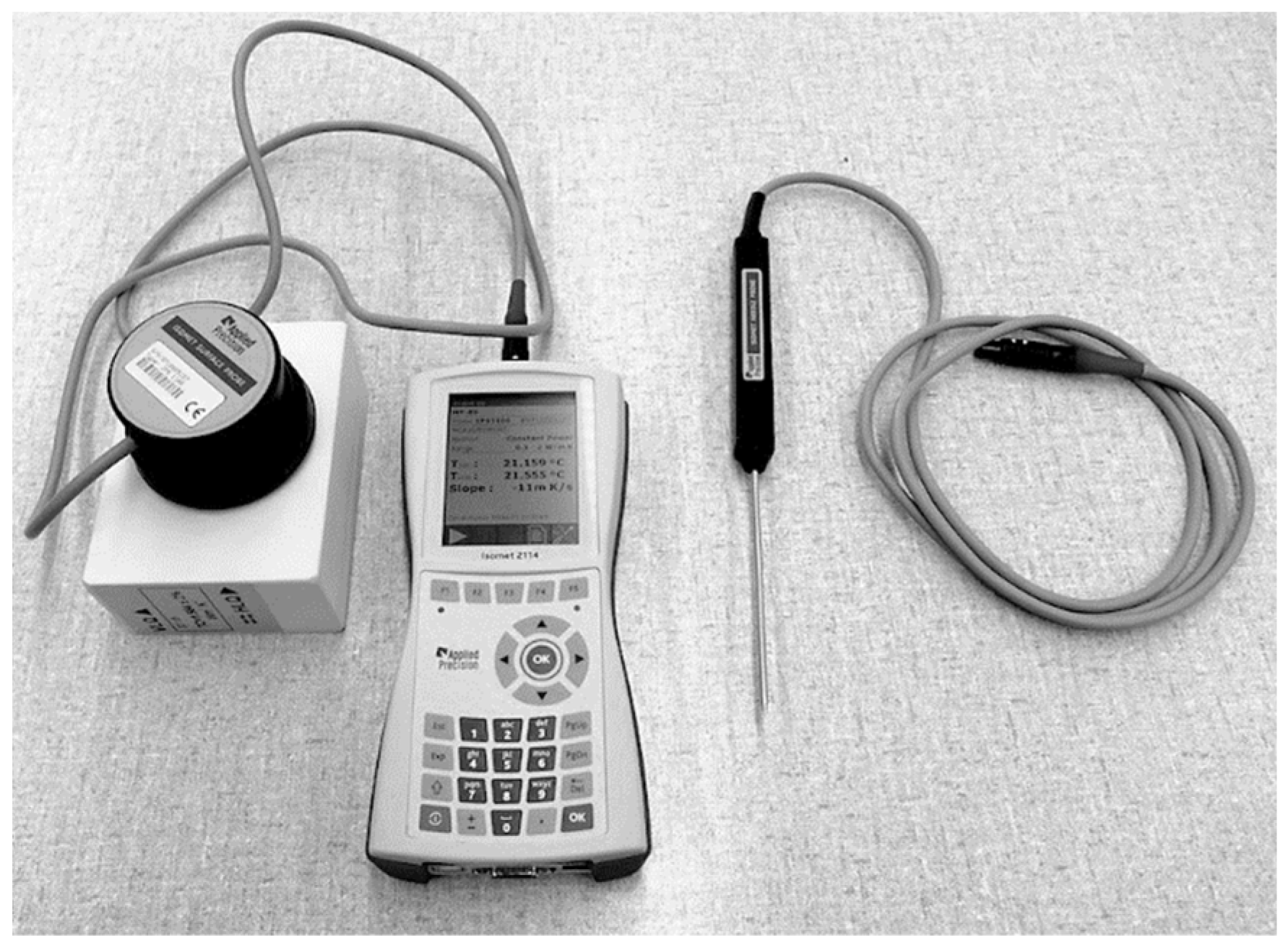
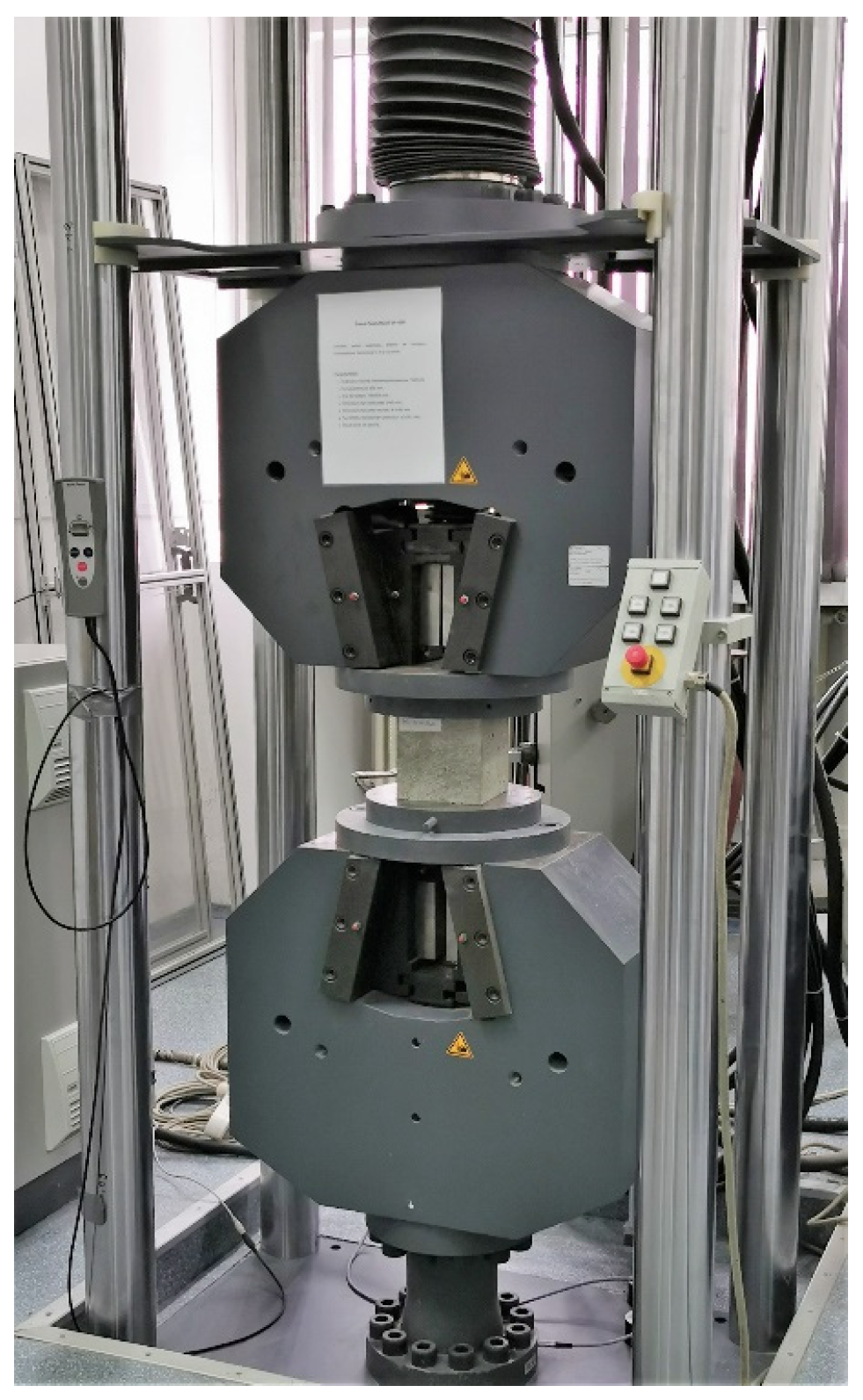


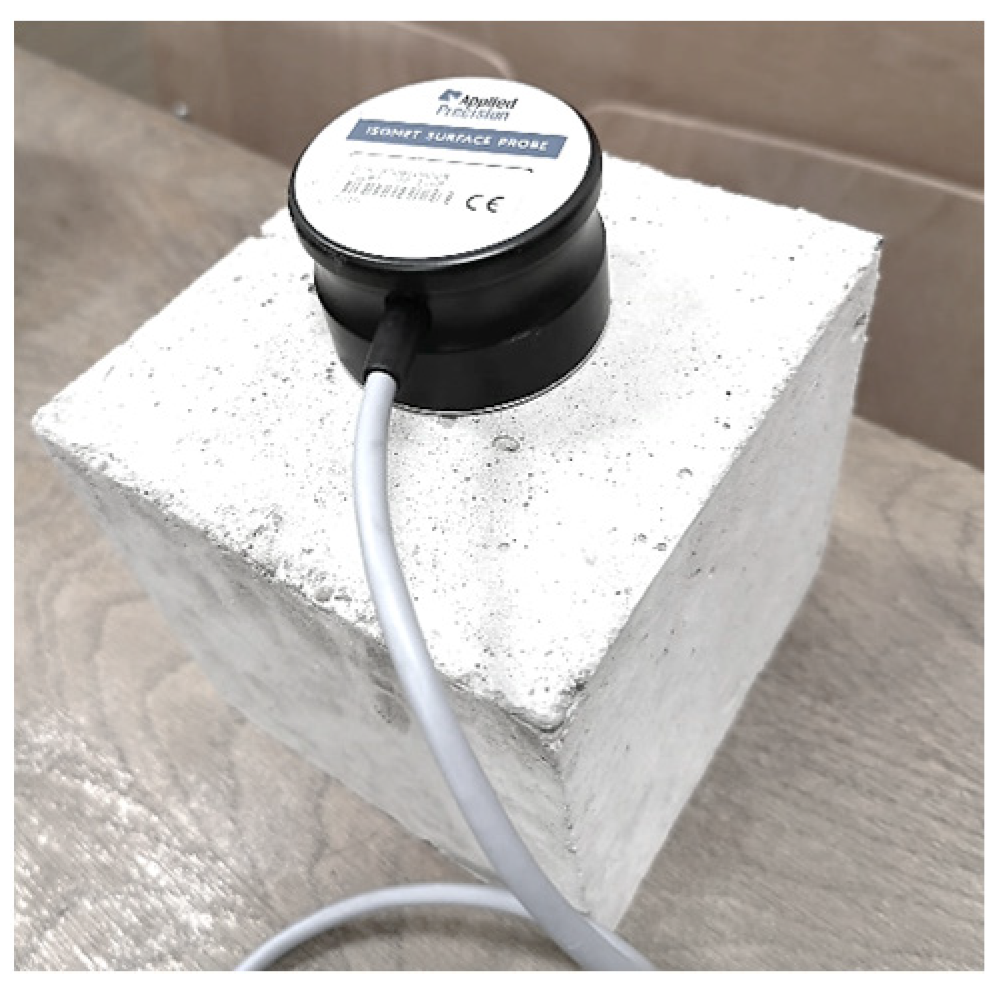
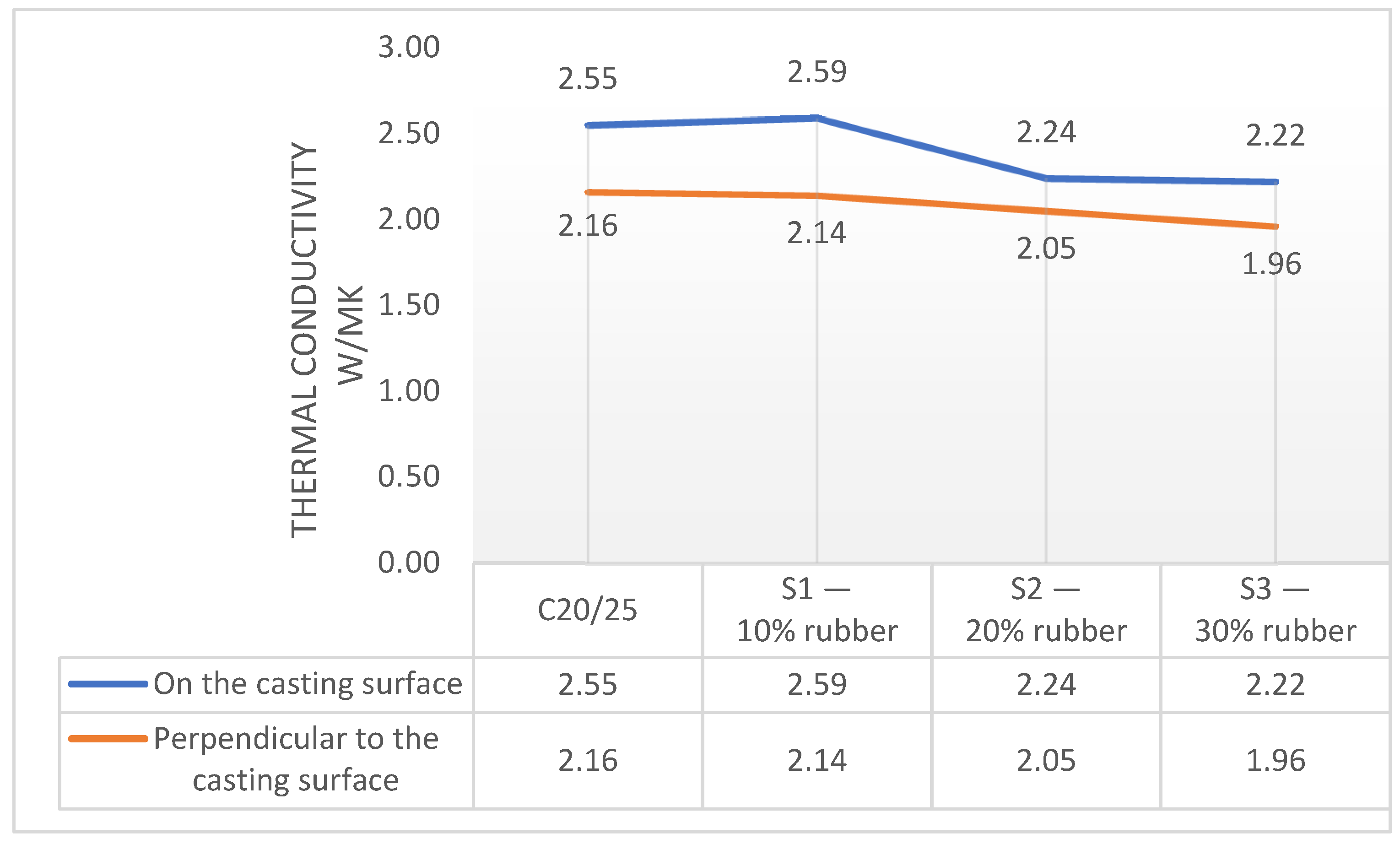
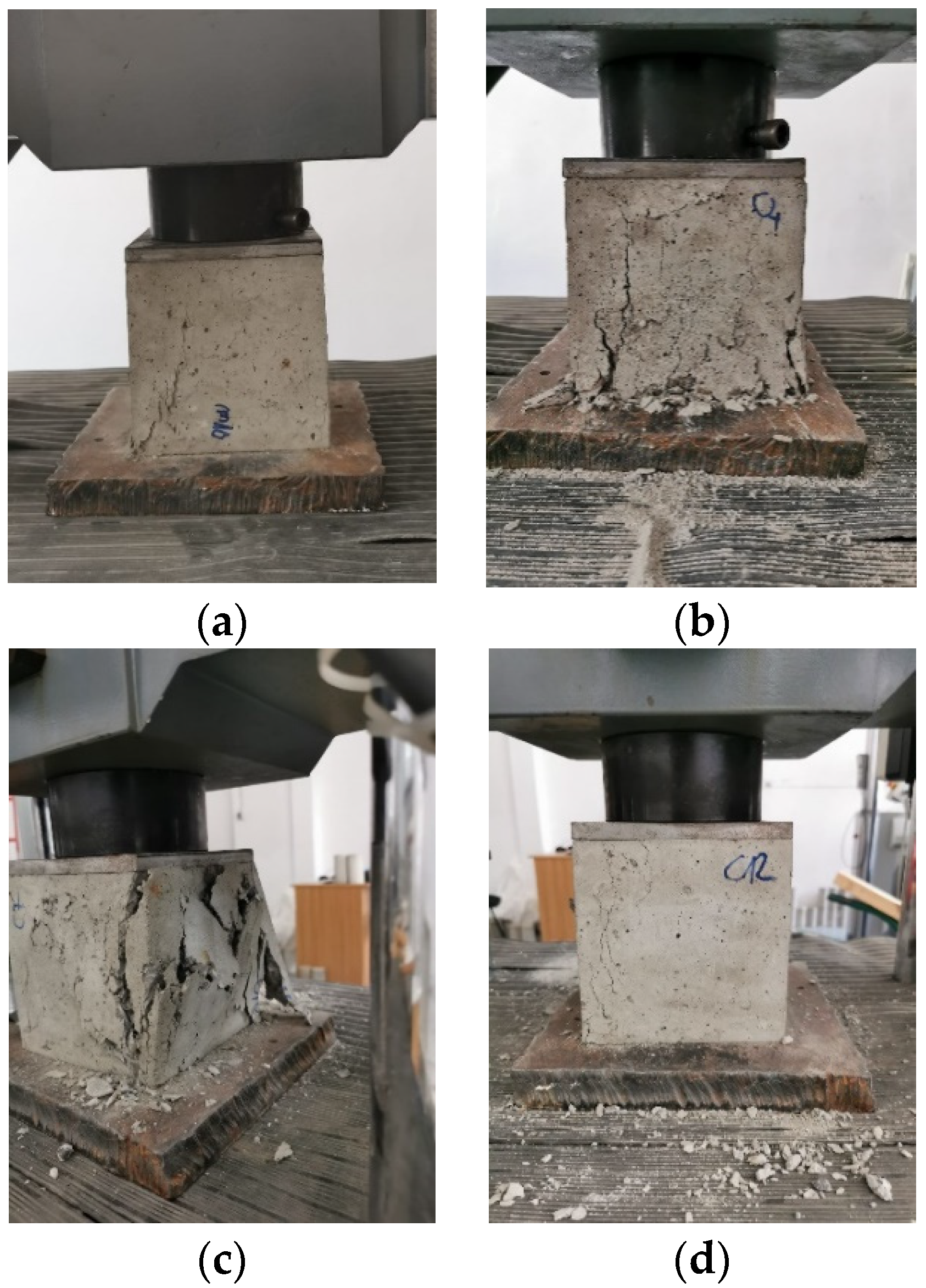
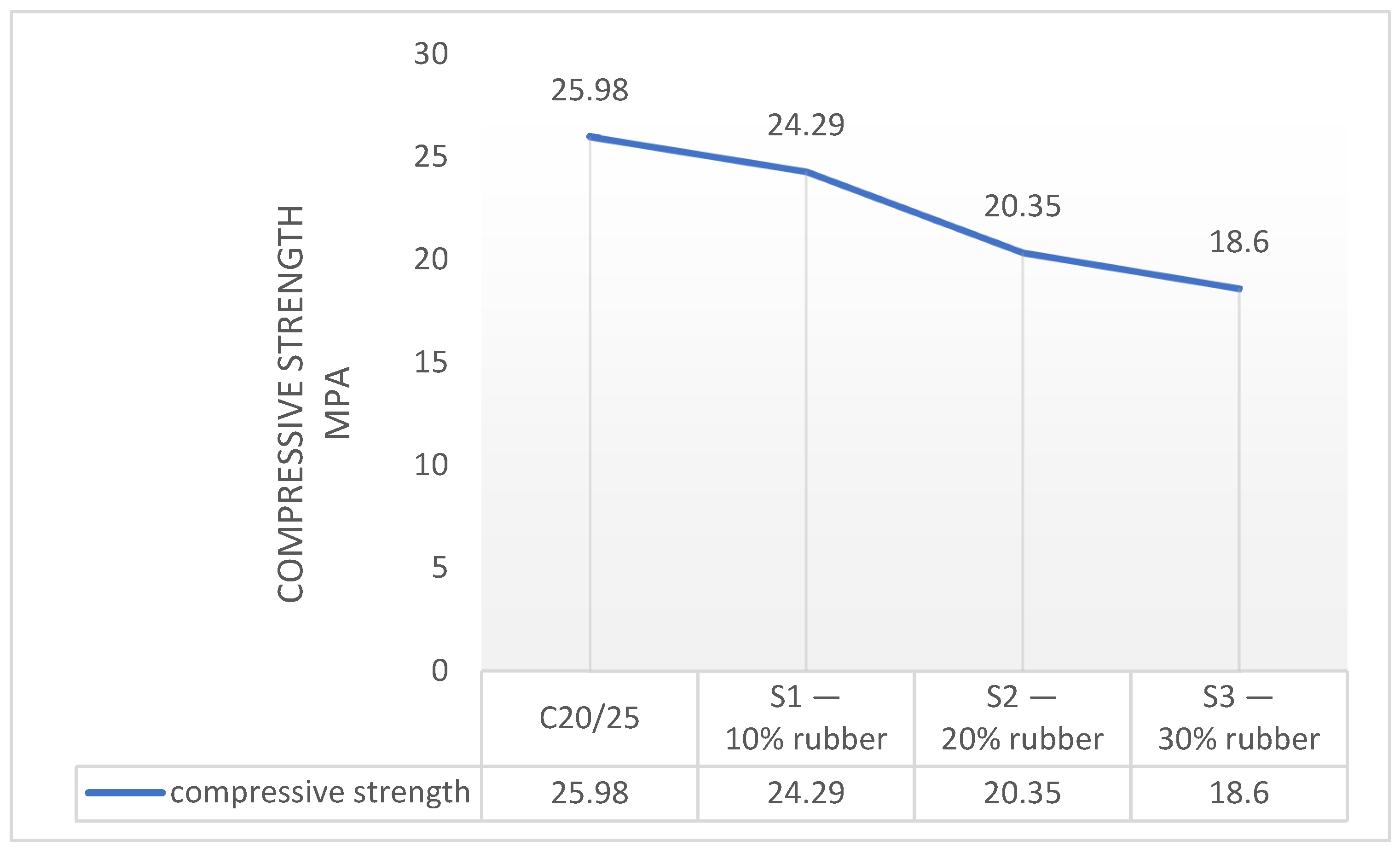
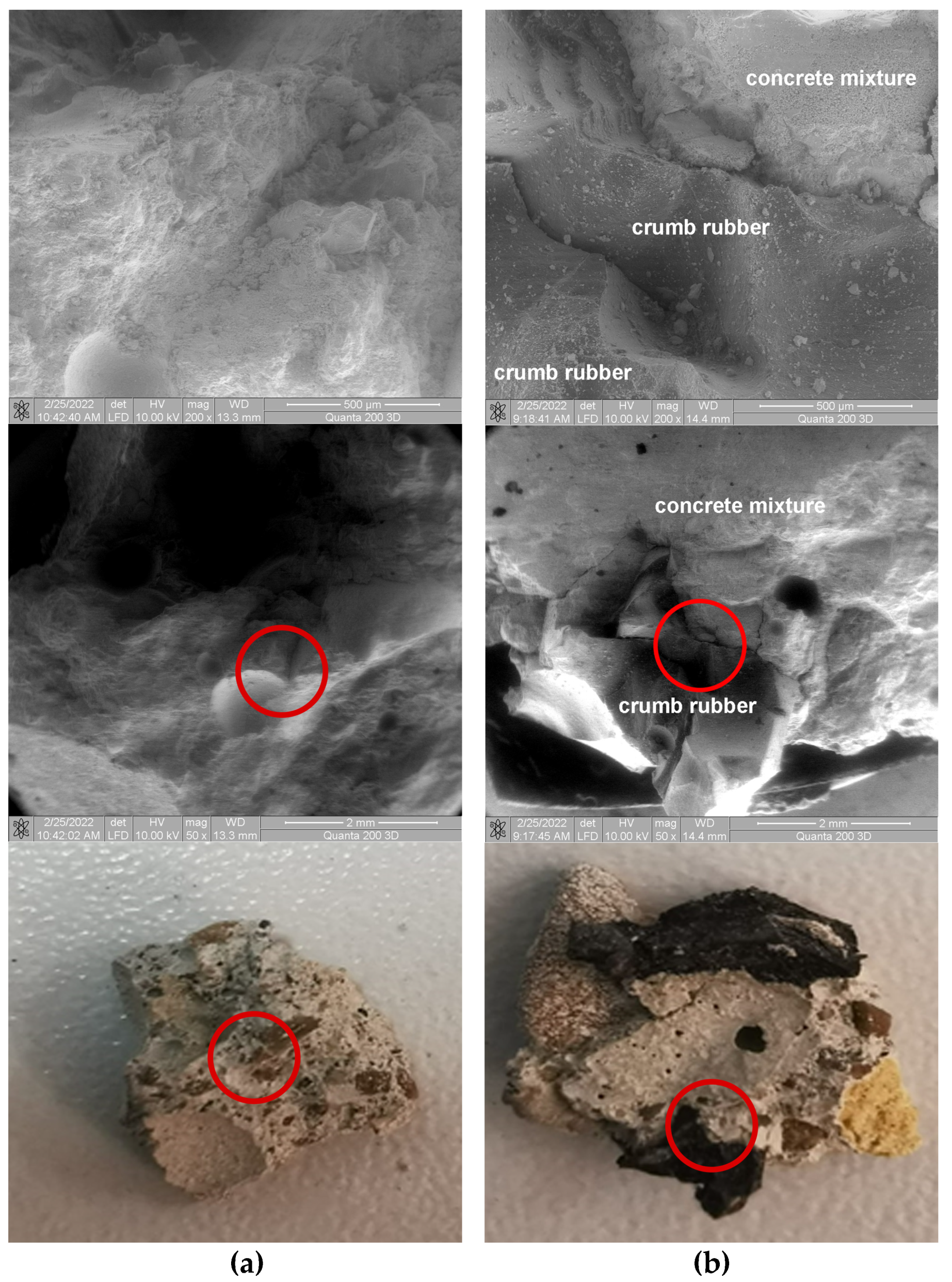
| Case Studies | Water (l/m3) | Cement (CEM I42.5R) (kg/m3) | Aggregate 0–4 mm (kg/m3) | Aggregate 4–8 mm (kg/m3) | Aggregate 8–16 mm (kg/m3) | Rubber (kg/m3) |
|---|---|---|---|---|---|---|
| C 20/25 | 180 | 330 | 764 | 317 | 783 | 0.0 |
| S1—10% rubber | 180 | 330 | 764 | 285 | 783 | 9.2 |
| S2—20% rubber | 180 | 330 | 764 | 253 | 783 | 18.4 |
| S3—30% rubber | 180 | 330 | 764 | 221 | 783 | 27.6 |
| Case Studies | Density (kg/m3) | Decreasing (%) |
|---|---|---|
| C 20/25 | 2296.92 | |
| 2290.04 | ||
| 2300.80 | ||
| average | 2295.92 | |
| S1—10% rubber | 2248.00 | |
| 2247.00 | ||
| 2252.00 | ||
| average | 2249.00 | 2.04 |
| S2—20% rubber | 2238.00 | |
| 2237.00 | ||
| 2242.00 | ||
| average | 2239.00 | 2.47 |
| S3—30% rubber | 2223.00 | |
| 2221.00 | ||
| 2228.00 | ||
| average | 2224.00 | 3.13 |
| Measuring Point | On the Casting Surface (W/mK) | Perpendicular to the Casting Surface (W/mK) | |||
|---|---|---|---|---|---|
| C 20/25—sample 1 | 2.58 | 2.14 | 2.07 | 2.11 | 2.18 |
| C 20/25—sample 2 | 2.61 | 2.26 | 2.16 | 2.05 | 2.20 |
| C 20/25—sample 3 | 2.48 | 2.21 | 2.25 | 2.13 | 2.17 |
| average | 2.55 | 2.16 | |||
| Measuring Point | On the Casting Surface (W/mK) | Perpendicular to the Casting Surface (W/mK) | |||
|---|---|---|---|---|---|
| S1—10% rubber | 2.59 | 2.26 | 1.73 | 2.24 | 2.34 |
| S2—20% rubber | 2.24 | 2.17 | 1.95 | 2.14 | 1.93 |
| S3—30% rubber | 2.22 | 2.06 | 1.97 | 1.96 | 1.85 |
| Case Studies | Compression Strength (MPa) | Decreasing in Percentage (%) |
|---|---|---|
| C 20/25 | 25.98 | 0 |
| S1—10% rubber | 24.29 | 6.5 |
| S2—20% rubber | 20.35 | 21.70 |
| S3—30% rubber | 18.60 | 28.41 |
Disclaimer/Publisher’s Note: The statements, opinions and data contained in all publications are solely those of the individual author(s) and contributor(s) and not of MDPI and/or the editor(s). MDPI and/or the editor(s) disclaim responsibility for any injury to people or property resulting from any ideas, methods, instructions or products referred to in the content. |
© 2023 by the authors. Licensee MDPI, Basel, Switzerland. This article is an open access article distributed under the terms and conditions of the Creative Commons Attribution (CC BY) license (https://creativecommons.org/licenses/by/4.0/).
Share and Cite
Cojocaru, A.; Isopescu, D.N.; Maxineasa, S.G.; Petre, S.G. Assessment of Thermal and Mechanical Properties of Cement-Based Materials—Part 1: Crumb Rubber Concrete. Buildings 2023, 13, 324. https://doi.org/10.3390/buildings13020324
Cojocaru A, Isopescu DN, Maxineasa SG, Petre SG. Assessment of Thermal and Mechanical Properties of Cement-Based Materials—Part 1: Crumb Rubber Concrete. Buildings. 2023; 13(2):324. https://doi.org/10.3390/buildings13020324
Chicago/Turabian StyleCojocaru, Alexandra, Dorina Nicolina Isopescu, Sebastian George Maxineasa, and Sergiu George Petre. 2023. "Assessment of Thermal and Mechanical Properties of Cement-Based Materials—Part 1: Crumb Rubber Concrete" Buildings 13, no. 2: 324. https://doi.org/10.3390/buildings13020324






